Washington
Sailor missing at sea for 2 weeks found alive in life raft 70 miles off Washington coast
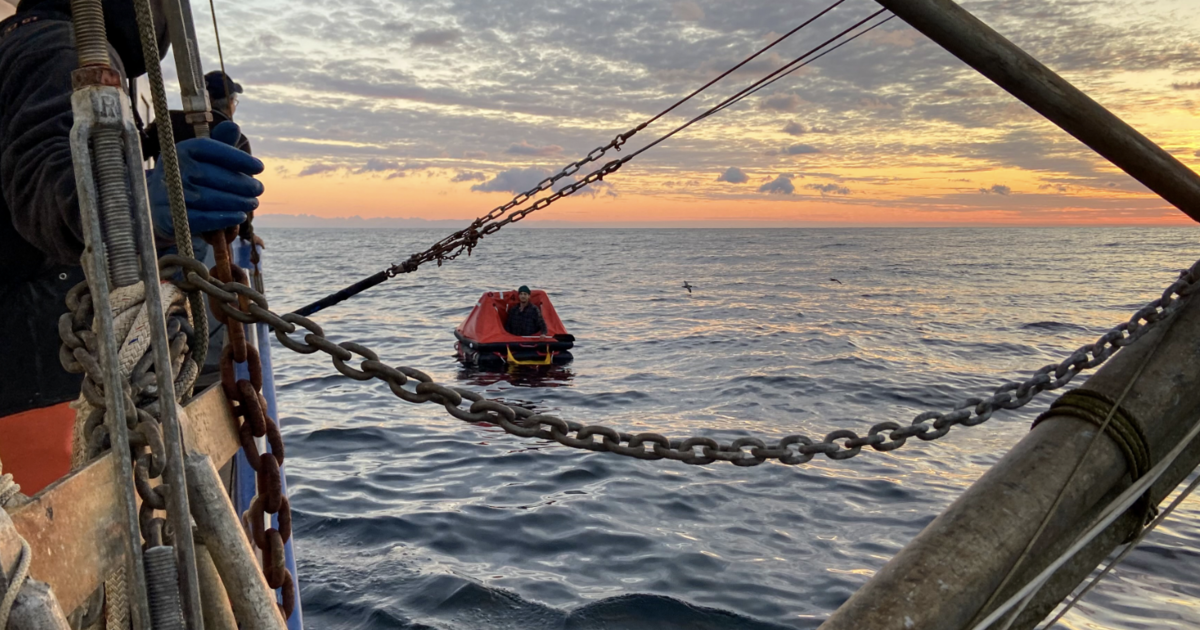
A sailor missing for nearly two weeks was found alive off the coast of Washington State’s Cape Flattery by a Good Samaritan two days after the Coast Guard suspended the search for him and one other person.
The two people on the boat had left Washington’s Grays Harbor on Oct. 12 in a 43-foot vessel called Evening. They were meant to return to the area on Oct. 15, the Pacific Northwest Coast Guard said in a social media post on Tuesday The agency searched 14,000 square miles of water before suspending the search on Wenesday.
The unidentified man was found in a life raft that was about 70 miles northwest of Cape Flattery, the Coast Guard said on social media on Thursday. It’s not clear how the good Samaritans found the man, but a photo shared by the Coast Guard shows their boat approaching the life raft. The photo shows two people standing on the edge of the vessel and the missing man sitting up in the raft.
Officials did not name the rescuers but KING-TV identified them as Ryan Planes and his uncle John, from Sooke, British Columbia.
“We pulled him on board. He gave me a big hug and it was emotional,” John told the station.
John told KING-TV the rescued man said he was alone on the raft for 13 days, and after running out of foof, he caught a salmon and ate it to survive.
“We made him breakfast. He drank three bottles of water,” he told the station. “He was pretty hungry, poor guy.”
The rescued man is said to be in stable condition, the Coast Guard said, and was transported to shore by the Canadian Coast Guard and a Canadian rescue agency.
A map shared by the Coast Guard showed where the man was found in relation to where the Evening departed from, with the harbor starred and the life raft’s location marked with a pin.
The second man remains missing. The Coast Guard said that the incident “remains under investigation.”
The Coast Guard did not say if the search would resume.
Thanks for reading CBS NEWS.
Create your free account or log in
for more features.

Washington
Childcare in Washington DC gets more expensive
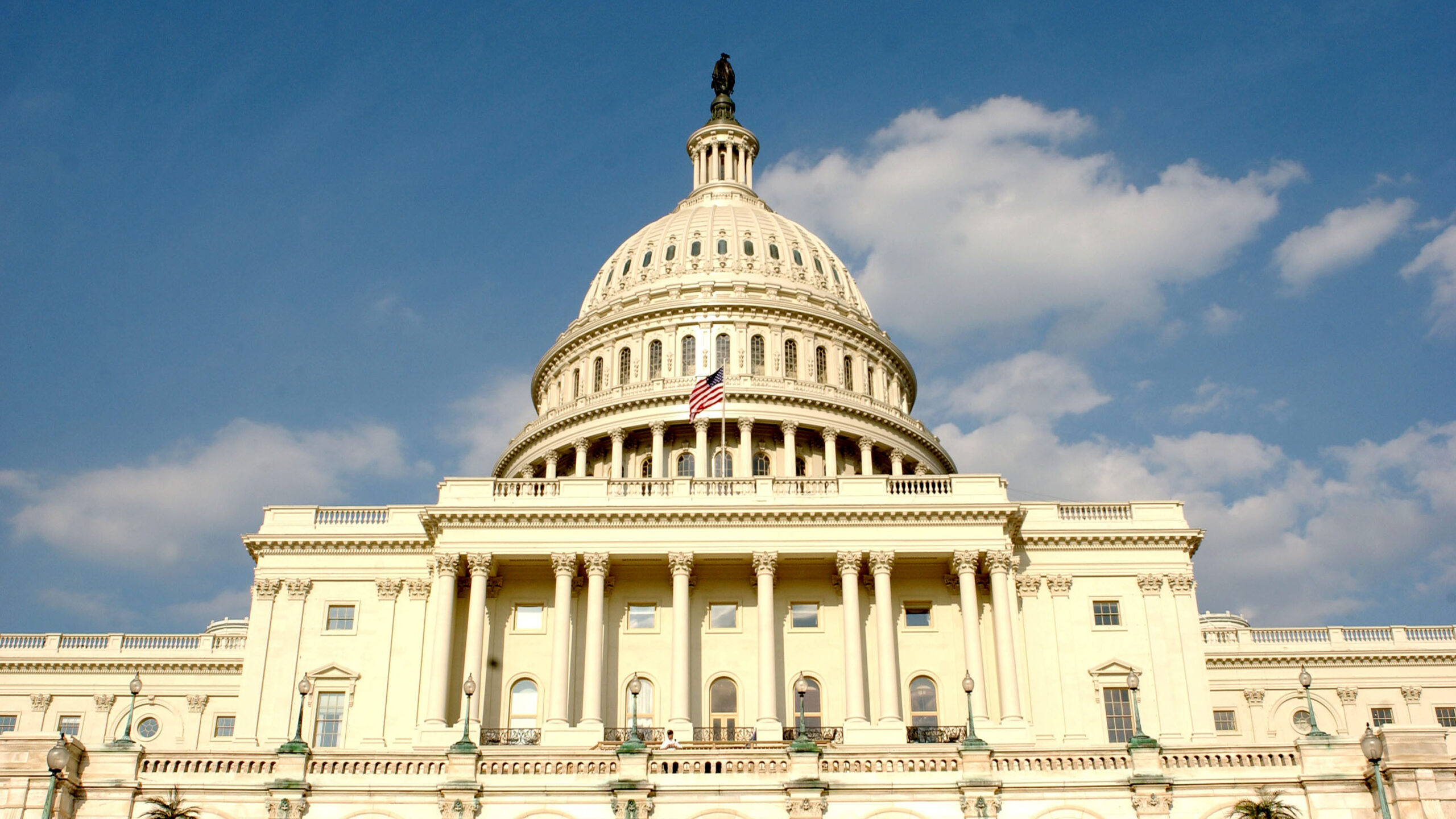
WASHINGTON — Washington is one of the most expensive cities in the nation to live. And needing childcare in the city only ups the price. A newly implemented city regulation is making the situation even more unsustainable for families.
This regulation was first drafted in 2016. Its goal is to protect the “health, safety and welfare” of Washington’s children. It also wants to promote an environment of “high-quality” education, according to the Office of the State Superintendent of Education (OSSE). Essentially, the new regulation would require much of Washington’s childcare staff to have a college degree.
Click here to read more about the requirements the regulation imposes on each staff type.
The regulation has not gone without objections. According to the Institute for Justice, a libertarian non-profit public interest law firm, it could force a lot of Washington’s good childcare staff off the job. The Institute cites issues such as the cost of getting a college degree as well as the time needed as barriers.
However, the OSSE states that some childcare staff can apply for a waiver to continue working.
This will depend on how long they’ve been working in childcare and their level of education.
Justin Zuckerman a producer at Reason Magazine, recently joined Inside Sources host Boyd Matheson to give some insight on Washington’s new regulation on childcare.
A portion of the transcript, edited for brevity, is below.
ZUCKERMAN: A lot of these daycare teachers are working moms or they’re elderly and retired. They just don’t have time to go back to college. So, it’s created a lot of frustration for directors, for the teachers, for parents. And, a lot of people are also leaving the city now because of it.
MATHESON: Obviously, everyone wants quality daycare. Everyone wants kids to be safe in daycare. But is this law equating a college degree with better quality services and care for the kids? Is that actually the correlation and the connection or is that just a piece of regulation?
Does a degree mean better childcare?
ZUCKERMAN: The science behind this says, for the most part, that daycare teachers who have bachelor’s degrees, those children tend to do better. But the science doesn’t actually say that it’s because of the bachelor’s degree.
Something like that is such a high standard that those kinds of daycares would cost a lot of money. It’s typically wealthier families who would put their kids in those programs.
Children from wealthy families tend to do better at school. The scientific paper that this new law is based off of even admits that they don’t have conclusive empirical evidence that having a college degree actually leads to better outcomes for kids or makes you a better teacher.
In the position of assistant teacher, you’re only required to have an associate’s degree in any field. So, you don’t even have to take a single class in early childhood education. You just need to have an associate’s degree in anything and you’re technically qualified.
What about other degrees?
MATHESON: And without it, you’re not, right? Even if it’s in underwater basket weaving, as long as you have that you’re in, if you don’t you’re out. I thought one of the other things that was really interesting in your piece, Justin, was a comment from one of the preschool directors saying that it’s not just taking the education, it’s experience. And so describe how this particular regulation in the city could impact the experience portion of getting to better daycare.
ZUCKERMAN: A lot of these daycare workers are women. And a lot of them have been working in this field for decades. They have experience that they say you simply can’t replicate or gain with a college degree.
It just comes with working in the fields for so long. If they do have a degree, you need a degree in early childhood education to be a lead teacher. If you have a degree in anything else, you’re still not technically qualified.
People who have been working for more than 10 years, can apply for a waiver. But, like that director who you spoke of, she has 11 teachers who applied for waivers with the superintendent’s office. They’ve been waiting for months and they have not heard back. It’s very difficult for these workers. They have no idea what their status is.
(The entire podcast can be heard above or by visiting the KSL NewsRadio podcast page.)
Inside Sources with Boyd Matheson can be heard weekdays from 1 to 3 p.m. Follow the show on Facebook.
Devin Oldroyd is a digital content producer for KSL NewsRadio. Follow him on X.
Related local coverage: Unaffordable childcare plagues Utah families
Washington
Manion Foundation To Honor Fallen Heroes At Washington Crossing

UPPER MAKEFIELD, PA — The Travis Manion Foundation (TMF), one of the nation’s leading veteran service organizations, is bringing The Honor Project to the Washington Crossing National Cemetery in Bucks County on Memorial Day and it is seeking volunteers to help honor the fallen.
In 2024, the impact of the project will be the largest in its history, with 2,000 volunteers visiting the resting places of fallen service members at 47 cemeteries in 24 states.
On Memorial Day, volunteers at Washington Crossing National Cemetery in Upper Makefield will personally visit and place hand-crafted commemorative tokens at the resting places of fallen heroes, paying their respects and pausing to reflect on the sacrifices of those service members.
Through The Honor Project, families of fallen service members and battle buddies are encouraged to request a personal visit to their fallen heroes.
For the third consecutive year, Philadelphia-based SimpleTire will donate $5,000 to TMF to support volunteers participating in The Honor Project at Washington Crossing National Cemetery.
“Memorial Day is a time to pause and reflect on those who made the ultimate sacrifice,” said Ryan Manion, CEO, Travis Manion Foundation. “It’s our duty and obligation as a nation to honor our fallen heroes by saying their names, learning their stories and preserving their legacies. We’re
grateful to SimpleTire for supporting the work of our volunteers in Bucks County to ensure that our fallen heroes are remembered on Memorial Day.”
On-site volunteer registration will be available at Washington Crossing National Cemetery beginning at 8:30 a.m. on Monday, May 27.
Washington
Washington D.C. Hosts Annual Trans-Caspian Forum, Outlines Challenges – The Astana Times

ASTANA – The Caspian Policy Center organized the eighth Annual Trans-Caspian Forum on May 21 in Washington, D.C., to discuss the current challenges and prospects for a multi-modal Trans-Caspian International Transport Route (TITR) to maximize its capacity.
From L to R: Tamar Satterwhite from the Commercial Law Development Program; Winnie Wang from the World Bank; moderator Dr. Marsha McGraw Olive; Ambassador Erin McKee, Assistant Administrator for the Europe and Eurasia Bureau at the United States Agency for International Development (USAID); and Henrik Hololei from the European Commission. Photo credit: caspianpolicy.org
TITR is a multi-modal route that runs through China, Kazakhstan, the Caspian Sea, Azerbaijan, Georgia and further to European countries. The development of the route has been garnering growing attention, becoming increasingly vital to strengthen the region’s economic resilience and promote trade diversification.
According to data from the TITR International Association, the transportation volume along this corridor reached nearly 2.8 million tons in 2023, up from 1.7 million in 2022. In the first quarter of 2024, the figure hit 771 million tons.
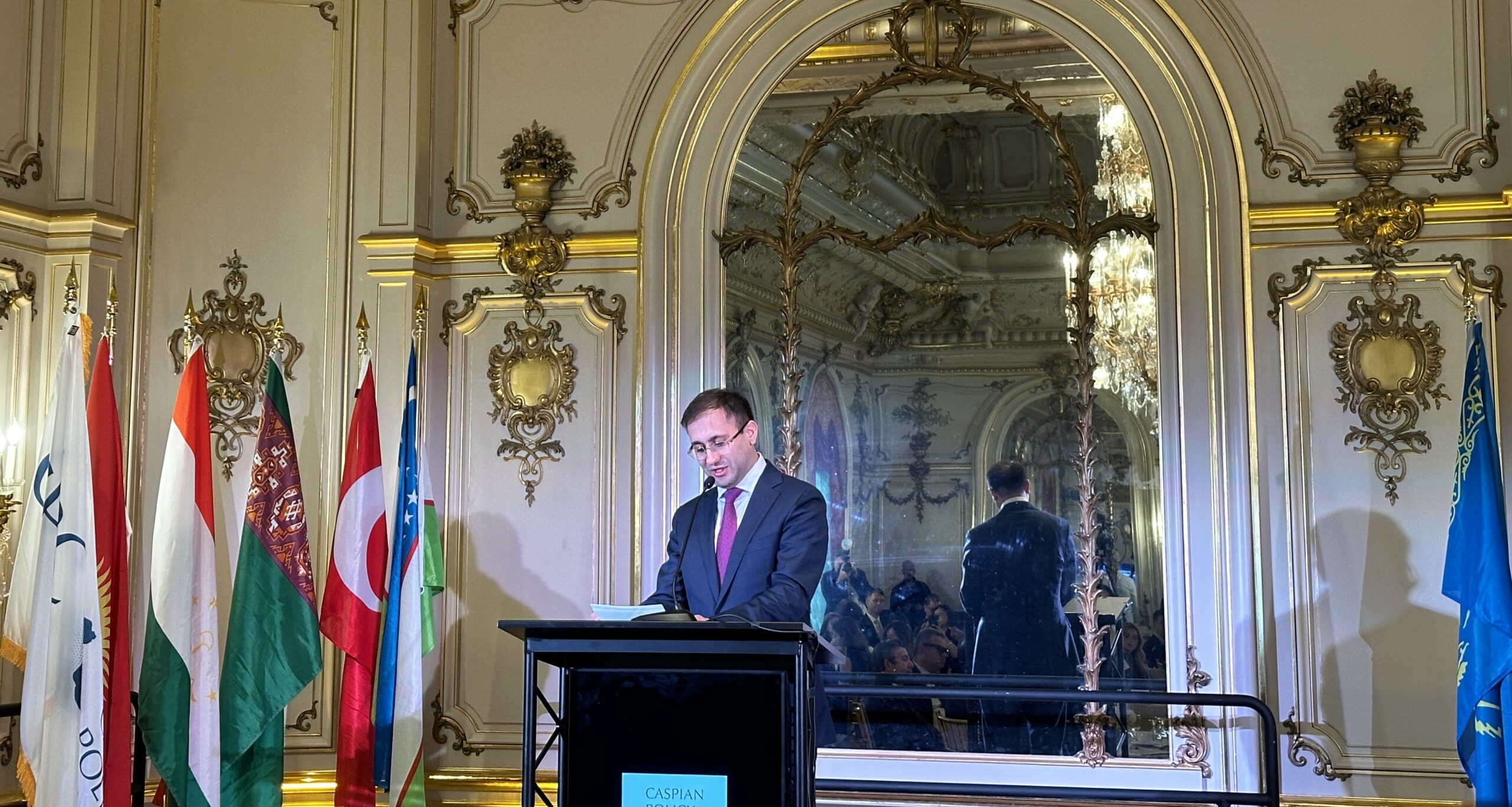
Efgan Nifti addresses the forum. Photo credit: caspianpolicy.org
Addressing the opening session, Caspian Policy Center President Efgan Nifti noted “remarkable” developments in the Caspian region in the last 12 months. These include progress in developing the Middle Corridor, reconciliation steps between Armenia and Azerbaijan, increased engagement and investment from international partners, energy transition, and the increasing significance of critical minerals.
“The need for diversification of trade routes is obvious. This has injected new momentum into the development of regional transport connectivity in Central Asia and the South Caucasus. Further support of projects such as the Middle Corridor will not only boost political and economic relations within the region but also will support regional goals for connectivity, energy diversification, and long-term development,” said Nifti.
Kazakhstan’s vision
The development of the TITR also aligns with Kazakhstan’s goal to become a transport and logistics hub.
Deputy Chief of Mission at the Kazakh Embassy in the United States Rauan Tleulin stressed the importance of the route, also known as the Middle Corridor. According to him, TITR is a strategic corridor for supplying energy resources from the region to Europe and global markets.

Rauan Tleulin from the Kazakh Embassy in the United States. Photo credit: caspianpolicy.org
“Along with oil and gas, we are focused on the transportation of common goods and critical commodities,” said Tleulin.
He spoke about Kazakhstan’s efforts to develop TITR. “Together with Azerbaijan, Georgia, and Türkiye, we also adopted a roadmap for further eliminating the so-called bottlenecks. Implementation of the agreements will allow increasing overall trade capacity to 10 million tons per year by 2025,” said the diplomat.
The roadmap, signed in November 2022, outlines the priority directions for investments and actions needed to improve the TITR. In June 2023, Azerbaijan, Georgia, and Kazakhstan agreed to create a single logistics operator.
In 2023, Kazakhstan first shipped oil via TITR, pumping it into the Baku-Tbilisi-Ceyhan pipeline under the agreement between KazMunayGas and Azerbaijan’s SOCAR oil and gas company.
Improving connectivity
Arun Venkataraman, Assistant Secretary of Commerce for Global Markets and Director General of the U.S. and Foreign Commercial Service Global Markets for the U.S. Department of Commerce, urged the gathering to focus on upgrading transport and logistical connectivity.
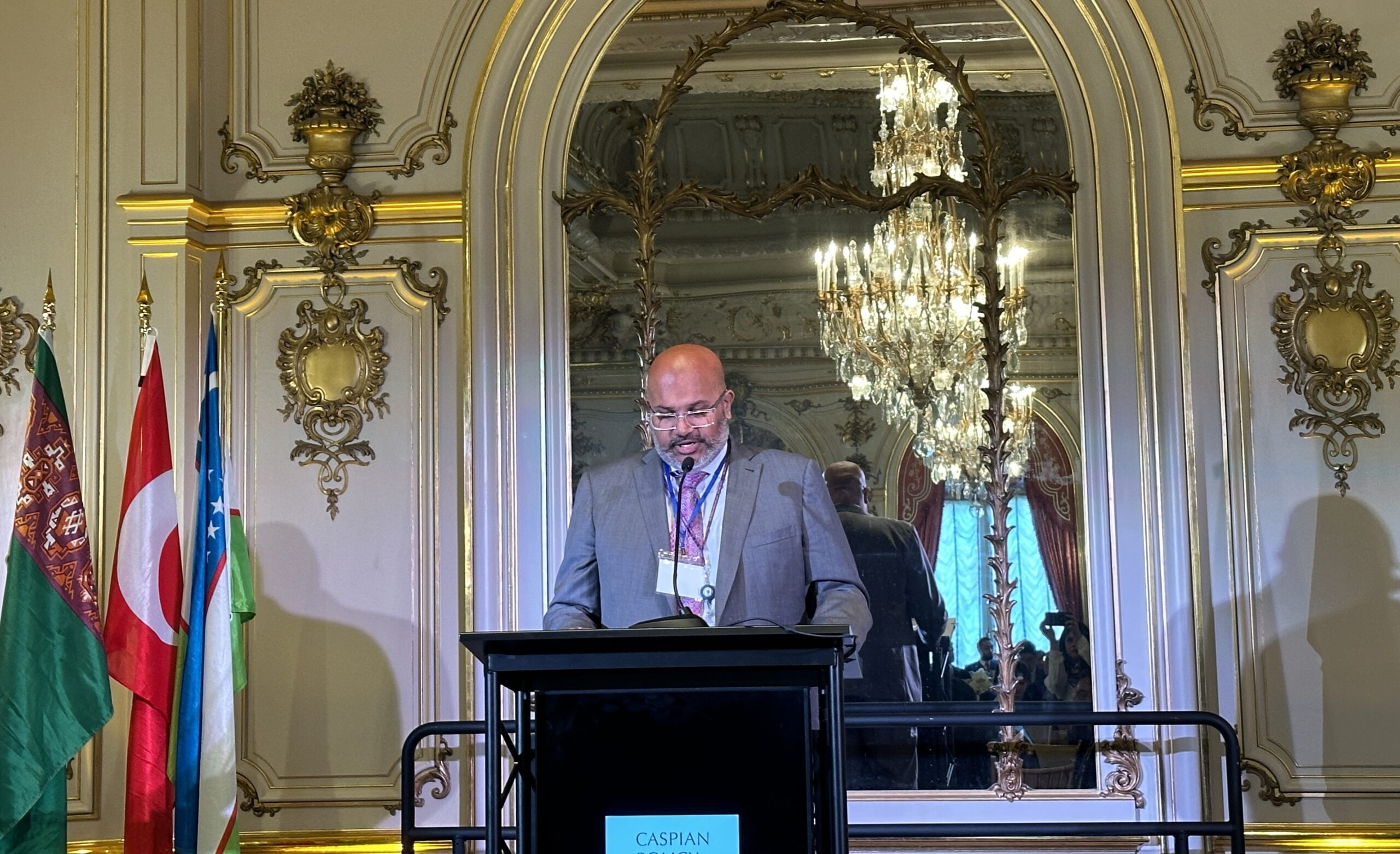
Arun Venkataraman. Photo credit: caspianpolicy.org
He said it goes beyond “just seaports, airports, cargo from roads and rail lines and highways, but also communications infrastructure, safety and security systems.”
“At the Department of Commerce’s International Trade Administration, it is our job to help businesses find partners overseas, meet their goals, and find solutions to help them advance those goals,” said Venkataraman.
Increased U.S. engagement benefits TITR development
The development of the corridor also benefits from increased engagement between the United States and the region, mainly Central Asia. Deputy Assistant Secretary of State for Central Asia John Mark Pommersheim said U.S. engagement with Central Asian leaders is now higher than ever.
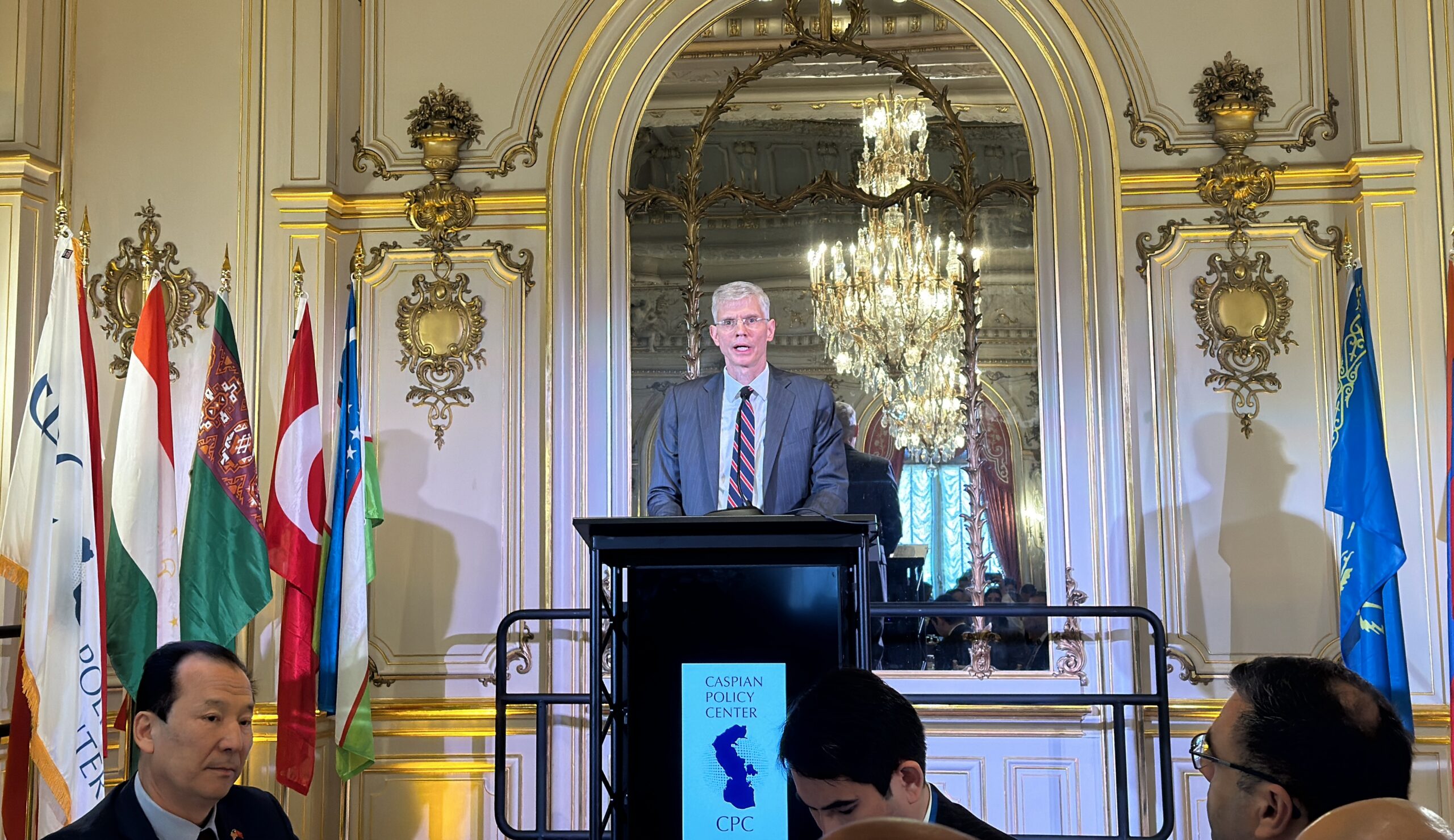
Ambassador John Mark Pommersheim. Photo credit: caspianpolicy.org
“Our cooperation has reached a new high over the past year,” he said, stressing the importance of the declaration signed by all five Central Asian leaders and the U.S. President in September 2023.
“We have an opportunity for the U.S. government to leverage enhanced coordination among our international partners, including for the G7 and other like-minded partners working in Central Asia, to share this common goal of advancing regional connectivity and economic resilience in Central Asia and the South Caucasus,” said the American diplomat.
Outlook from beyond
Addressing the second panel of the forum, Hors Classe Adviser to the Directorate-General for International Partnerships at the European Commission Henrik Hololei said the development of TITR into a “modern, multimodal economic gateway” is one of the key projects for the European Union.
“It is in all our interests to make the corridor competitive, predictable, affordable, and sustainable,” he said.
Hololei emphasized that developing this corridor is more crucial now than ever before.
“It’s now or never for the corridor,” he said. “During the Soviet era, the corridor was purposefully not integrated. This was a policy of division, not integration. Now, however, we have an opportunity to put it right.”
In doing so, he announced that Astana would host the launch of the EU-Central Asia coordination platform in a few weeks. The platform will establish a permanent framework aimed at fostering the implementation of projects in Central Asia.
In a recent interview with The Astana Times, Hololei expressed high hopes about the route, saying it could become a game changer in Asia-Europe connectivity.
Tamar Satterwhite, senior counsel for the Commercial Law Development Program (CLDP) at the Office of the General Counsel at the U.S. Department of Commerce, drew attention to the poor coordination among countries along the corridor and investors.
“There is a lack of coordination among the donor organizations, among the countries, and specific ministries in each country. This includes lack of information sharing,” said Satterwhite.
Costs to address the bottlenecks
In its 2023 study, the European Bank for Reconstruction and Development estimated the cost of addressing hard and soft infrastructure needs of the corridor could reach 17 billion euros (US$18.4 billion).
Winnie Wang, a lead infrastructure specialist and program leader for Europe and Central Asia at the World Bank, disclosed the World Bank’s estimates. She said the cost of priority investments may reach around $7 billion.
“We see great impacts when projects are designed to address specific bottlenecks and to define the level of service. To this end, at the World Bank, we have employed a number of regional and global monitoring tools to give the corridor solutions,” said Winnie Wang.
In November 2023, the group released a study called Unlocking the Potential of the Middle Corridor, focusing on Kazakhstan, Azerbaijan, and Georgia. The study suggests measures that can transform TITR into a vital trade route.
Among the recommendations are implementing corridor-length logistics solutions for seamless operations, simplifying border crossing procedures to facilitate traffic and data exchanges, improving digital solutions and establishing a uniform system for prioritizing investments.
According to the study, with the right policies and investments, the corridor can triple trade volumes by 2030 to 11 million tons compared to 2021 levels and reduce travel time by half.
-

 Politics1 week ago
Politics1 week agoDem newcomer aims for history with primary win over wealthy controversial congressman
-

 Politics1 week ago
Politics1 week agoSouthern border migrant encounters decrease slightly but gotaways still surge under Biden
-

 World1 week ago
World1 week agoSlovakia PM Robert Fico in ‘very serious’ condition after being shot
-

 World1 week ago
World1 week agoCanadian Nobel-winning author Alice Munro dies aged 92
-

 Politics1 week ago
Politics1 week agoVulnerable Dem incumbents move to the center in key swing states as Biden panders to far-left base
-

 News1 week ago
News1 week agoDespite state bans, abortions nationwide are up, driven by telehealth
-

 World1 week ago
World1 week ago‘Monstrous crime’: World reacts to attack on Slovakia’s prime minister
-

 News1 week ago
News1 week agoSmall but mighty Nimble becomes first mixed-breed dog to win Westminster agility title




















